As water temperatures continue to fall, the majority of spotted bass move offshore in search of bait. This happens on lakes all over the country and can lead to some tremendous days of fishing. Spotted bass will often congregate in large numbers in search of bait, creating the perfect opportunity to target them with a jigging spoon. While this technique is extremely popular on herring lakes, it is prevalent on nearly every lake that holds spotted bass.
One of the best ways to target these fish is by utilizing your electronics. Tools such as mapping, side scan and forward facing sonar all play a big roll in being efficient with this technique. These offshore spotted bass will congregate on a variety of different structures based on the current conditions. This feature will cover exactly how and where to fish jigging spoons for deep spotted bass.
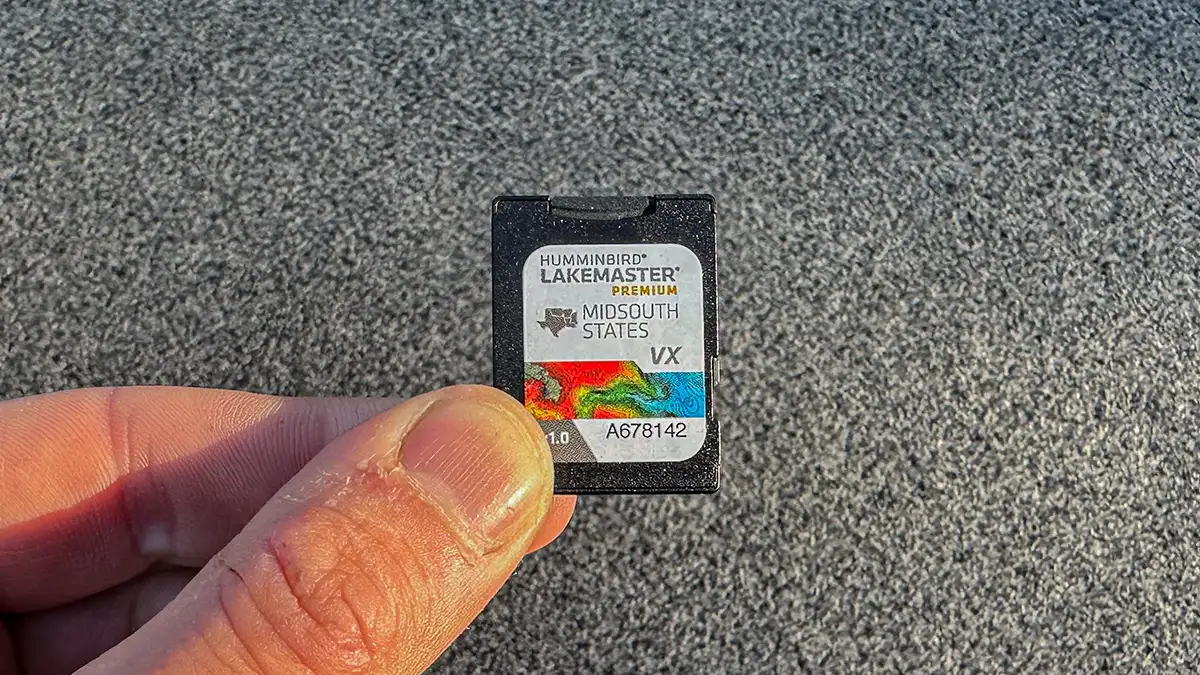
USING YOUR MAPS
Maps are one of the most useful tools for quickly locating productive water in this scenario. Whether you have a Lowrance, Humminbird or Garmin there are a plethora of different maps that will work perfect for your local body of water. Chips such Navionics, C-MAP and Lakemaster all have up to date maps featuring the majority of United States fisheries. One of the easiest ways to utilize these maps is by targeting varying contour changes such as ditches, points and humps.
Once you catch some fish on a structure, you can then efficiently check similar structures using your map. This is a great way to quickly capitalize on a pattern when running this technique. Once you locate an area you want to check using your maps, tools such as side scan and forward facing sonar can quickly show you if bass are present.
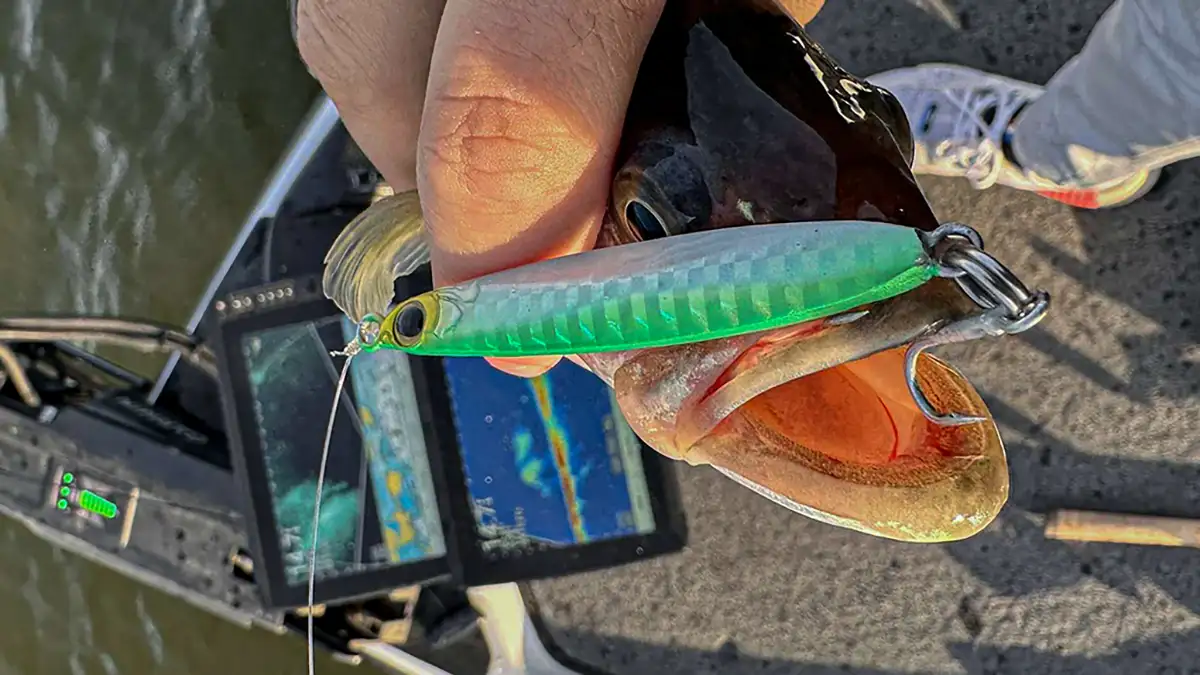
USING YOUR ELECTRONICS
Side scan and forward facing sonar are undoubtedly the most important tools for targeting spotted bass with a jigging spoon. This technology allows you to quickly locate schools of fish, and watch how they react to your lure. This technology also allows you to make precise casts at fish that would otherwise go unnoticed. Using forward facing sonar to target groups of fish with a jigging spoon is one of the best ways to get a bite on this bait.
Throwing this bait in the direction these fish are traveling and keeping it above their head is the most effective presentation. You can target both singles and groups of fish, however the larger groups tend to bite the best. Varying the cadence of your jigging spoon based off how they react on forward facing sonar is a great way to fish this bait. Another way your electronics can help is quickly locating bait. This is often one of the most consistent factors in congregating groups of bass.
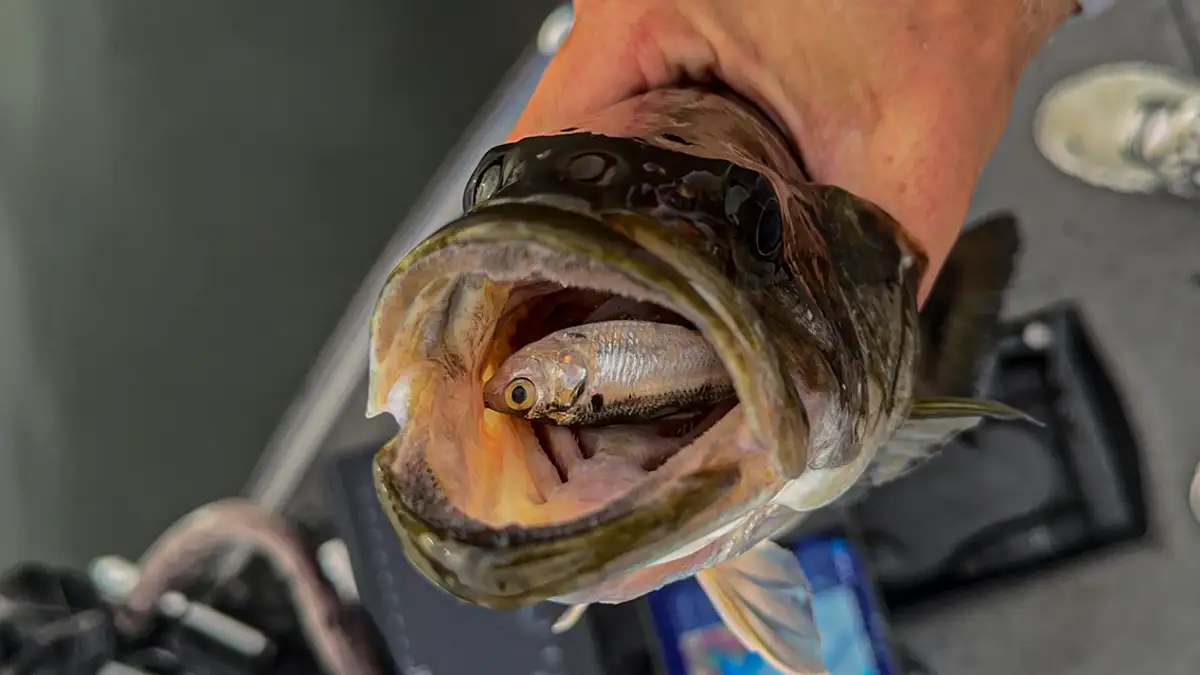
FIND THE BAIT
Locating schools of bait is often an essential component in finding offshore spotted bass. The bass will chase bait all over the water column, congregating in certain areas. Using side scan is the most efficient way to quickly locate these schools of bait. Idling over varying structures such as ditches, points and humps looking for bait is a great place to start. Setting your side scan distance out to 100 or more feet is a great way to cover a lot of water in a short period of time.
Once you locate a ball of bait, drop your trolling motor and look for groups of bass feeding on the bait using forward facing sonar. If you locate a group of bass relating to bait, they are often far more willing to eat. The competition of other fish and the presence of bait can fire these fish up making them less hesitant to bite. Throwing a fast sinking jigging spoon at these fish and ripping it above their head is a great way to get them to react. Depending on the presence of bait and other weather conditions, spotted bass typically position themselves on a few specific pieces of cover. These include ditches, points and brush, all of which require a different approach when using a jigging spoon.
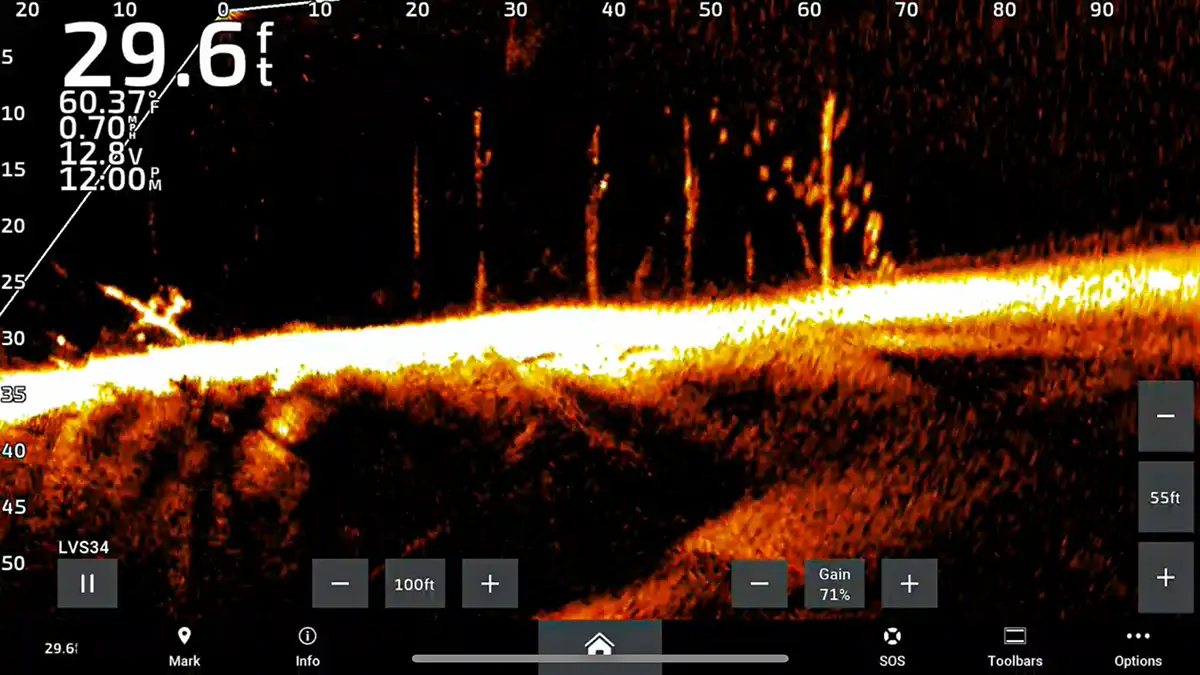
TARGETING DITCHES
Ditch fishing is one of the most popular methods for catching wintertime spotted bass on a jigging spoon. This is a traditional schooling location for spotted bass this time of year, as they will often congregate in these areas in search of bait. A ditch consists of the deepest area between two high spots. These deep pinch point areas tend to congregate baitfish, making it an ideal area to fish a jigging spoon. Some of my personal favorite spoons for this scenario are the War Eagle Jigging Spoon and the Cotton Cordell Jigging Spoon.
When looking for a productive ditch, it is best to idle multiple ditches in search of bait. Once you locate an area with bait, drop the trolling motor and use forward facing sonar to locate the spotted bass. Cast your jigging spoon making sure to keep it just above the fish’s head, varying your cadence based on their reaction. I’ve found that a heavier weighted jigging spoon works best for this application, as they are often deep and moving in search of bait. This heavier weight allows you to get the bait in front of their face before they disappear from the screen. I typically opt for anything from 1/2 to 3/4-ounce jigging spoon in this scenario.
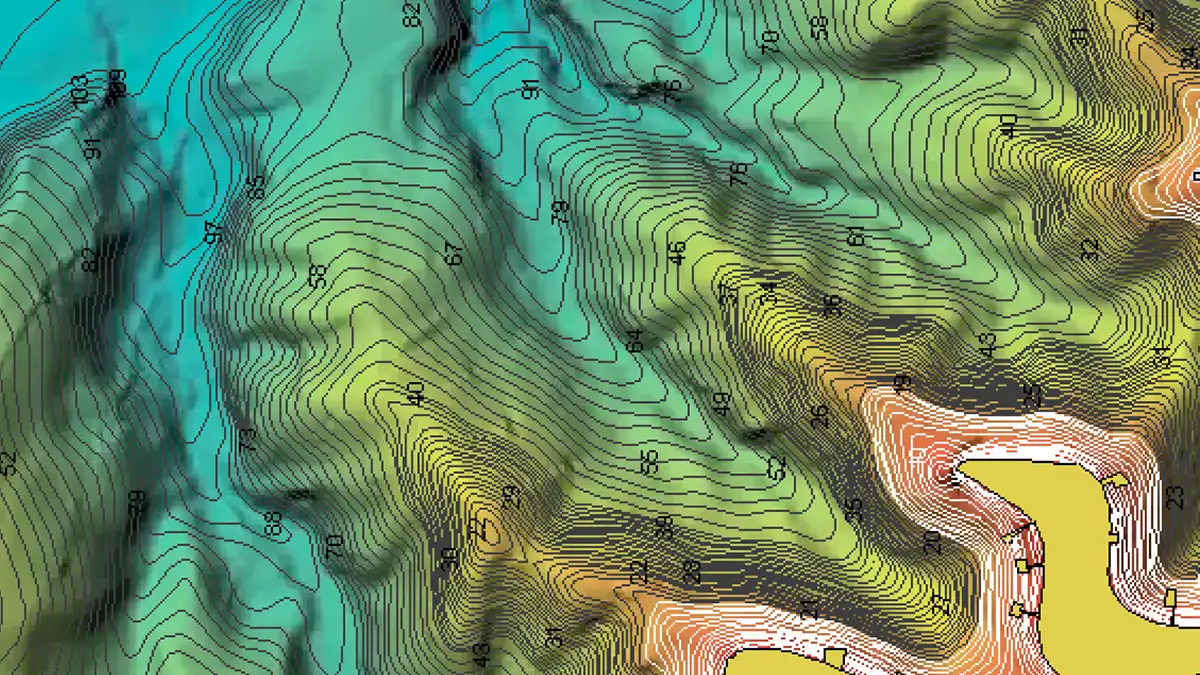
TARGETING POINTS
Points are another location that tend to hold deep spotted bass this time of year. This can be anything from a main lake point to one in the back of a creek, as it primarily depends on where the baitfish are located. Using side scan is still an effective way to locate bait in this scenario as well. Fish will often position at varying depths throughout the water column based on the current conditions, which can change how they react to your jigging spoon.
I’ve found that the fish suspended of the bottom are far more receptive to your bait. These seem to be more active and willing to chase down your lure. The fish that position on the bottom however can be more difficult to coax into biting. While difficult at times, these fish are still able to be caught. I will often implement a slower cadence in these scenarios, allowing the bait to sit in front of the fix for extended periods of time. When fish are higher in the water column however, I will quickly twitch the bait forcing them to chase it down. This seems to get more consistent reaction strikes in this scenario.
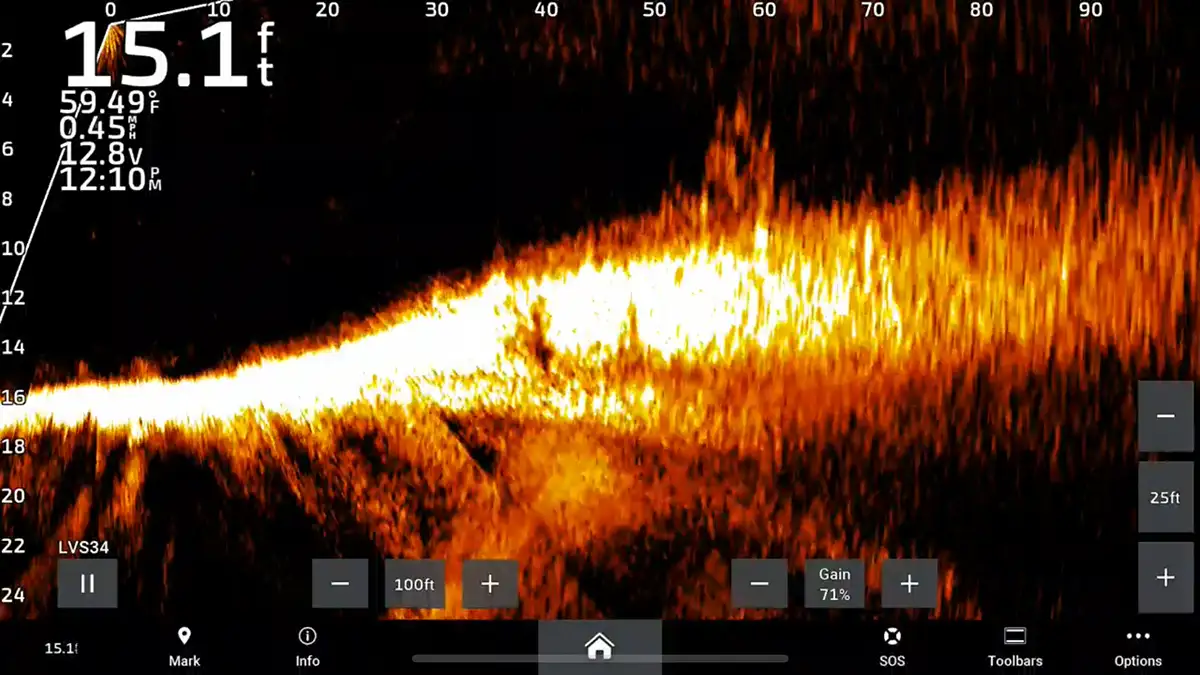
TARGETING BRUSH
Targeting deep brush with a jigging spoon is another great way to catch spotted bass this time of year. Bass will often relate to this structure and use it as an ambush point for passing balls of bait. One of the best way to fish this type of cover throughout the winter months is with a jigging spoon. If the brush pile is any shallower than 30-foot deep, I will make long casts towards the pile to avoid spooking the fish. Let your jigging spoon fall down to the pile, then quickly snap it keeping the bait right above the brush. This is the best method for calling fish up out of cover with a jigging spoon.
Spotted bass will suspend around the pile as well, often moving in search of bait. Throwing a heavier sized jigging spoon at these fish and twitching it above their heads is a great way to get them to react. Forward facing sonar plays a big roll in this scenario for providing a good presentation and keeping your bait out of the brush. Targeting spotted bass in all three of these locations using your electronics and a jigging spoon can be an extremely effective way to catch spotted bass this time of year.
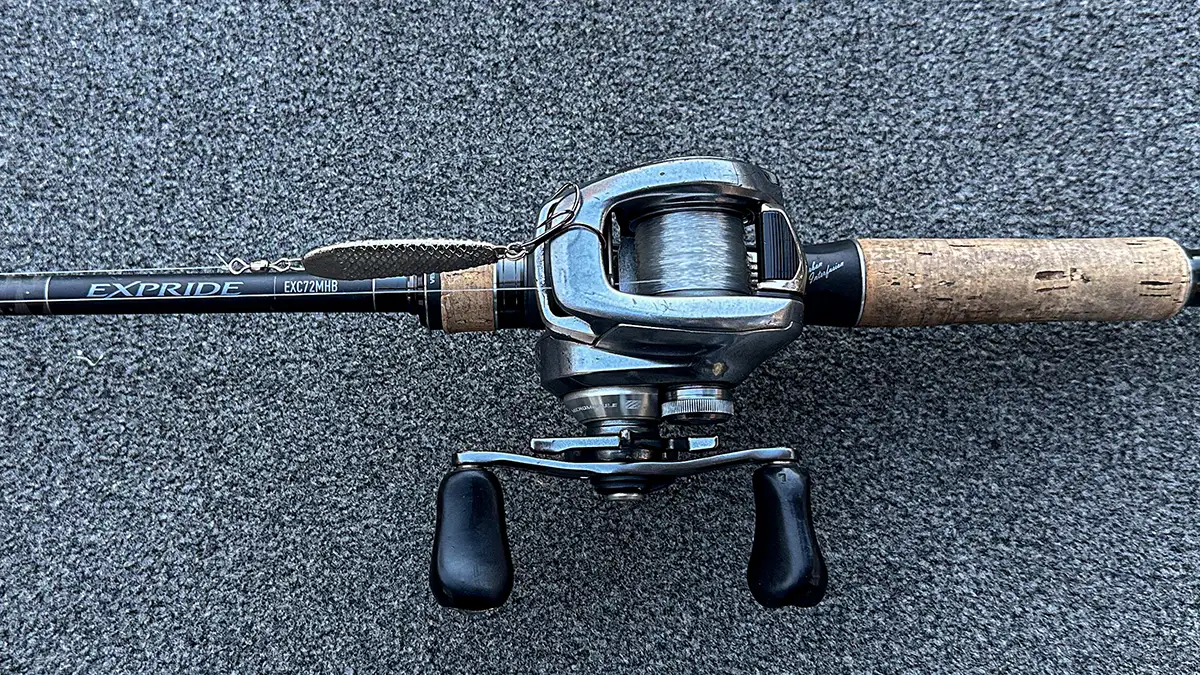
CHOOSING THE RIGHT SETUP
While this style of fishing often results in a plentiful amount of bites, landing these fish can be quite difficult on heavy jigging spoons. The best way to counteract this issue is by using the proper rod, reel and line setup. When throwing a jigging spoon, I prefer a medium heavy casting rod with a high gear ratio reel and 12-pound fluorocarbon. This seems to be the most proficient setup for consistently landing fish on a jigging spoon.
For a rod, I typically opt for a 7-foot medium heavy casting rod with a moderate tip. This gives you enough power to fight the fish while being soft enough to not break the line. One of my go to rods for this scenario is the 7-foot 2-inch Shimano Expride B Casting rod. For a reel, I prefer one with a high gear ratio such as this Shimano Batam MGL A XG. This allows you to quickly pick up line while working this bait, which Is extremely important for this style of fishing.
Throwing a jigging spoon is a fun and effective way to catch bass this winter. Not only does it get a lot of bites, but trophy sized spotted bass are frequently caught on this technique. If you’re looking for a way to target trophy spotted bass this winter, using this lure in conjunction with forward facing sonar is a great way to do so. This review covers everything you need to know for targeting deep water spotted bass with a jigging spoon.












